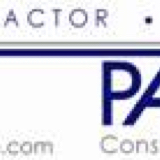Title Page
-
Supervisor/Foreman:
-
Jobsite Name:
-
Job Number
Instructions:
-
1: Use the Cost Code Sheet to fill in the slots for each day with the estimated labor. Include phase codes for each day.
-
2: Understand crews and shifts: Three man crew (1 shift = 3 men for an 8 hours) Four man crew ( 1 Sht = 4 men for an 8 hour day) Etc.
-
3: The supervisor is included as part of the crew. (A three man crew is one supervisor and 2 craft) You are assumed to be a working supervisor.
-
4: Add additional tasks each day in order to beat your labor estimate. Beating the estimate does not just happen, it takes planning. Plan ahead to beat the estimate.
-
5: Once you fill in the days, work back and make sure you have materials and equipment. Communicate to your PM.
-
6: You are responsible for understanding the production rates, estimated crews, cost codes, etc.
-
7:Call and email your PL with specific questions concerning the cost code sheet and control estimate. Be very specific. Cite phases etc to make sure you are both looking at the same thing. Y
-
8: All phases should be utilized. Unused phases are a sign you don't know your estimate.
-
9: Figure out how to beat the estimate.
-
10: Try to complete the job with 1 less guy each day. Show operators how to check grade as they dig, put guys in charge of small work tasks, plan ahead to eliminate wasted time getting tools, etc. There are tons of opportunities to save time.
Week 1:
-
Week Ending:
Monday:
-
Crew Size:
-
Task List: (Note cost code phases and descriptions)
-
Phase Code:
-
Daily Tool, Material, Equipment Requirements
Tuesday:
-
Crew Size:
-
Task List: (Note cost code phases and descriptions)
-
Phase Code:
-
Daily Tool, Material, Equipment Requirements
Wednesday:
-
Crew Size:
-
Task List: (Note cost code phases and descriptions)
-
Phase Code:
-
Daily Tool, Material, Equipment Requirements
Thursday:
-
Crew Size:
-
Task List: (Note cost code phases and descriptions)
-
Phase Code:
-
Daily Tool, Material, Equipment Requirements
Friday:
-
Crew Size:
-
Task List: (Note cost code phases and descriptions)
-
Phase Code:
-
Daily Tool, Material, Equipment Requirements
Critical Weekly Events: (Required start-up, subs, critical deliveries etc)
-
List:
-
List:
-
List:
-
List:
What Must go right for you to meet your schedule? (Most critical event)
-
List:
-
List:
Week 2:
Monday:
-
Week Ending:
-
Crew Size:
-
Task List: (Note cost code phases and descriptions)
-
Phase Code:
-
Daily Tool, Material, Equipment Requirements
Tuesday:
-
Crew Size:
-
Task List: (Note cost code phases and descriptions)
-
Phase Code:
-
Daily Tool, Material, Equipment Requirements
Wednesday:
-
Crew Size:
-
Task List: (Note cost code phases and descriptions)
-
Phase Code:
-
Daily Tool, Material, Equipment Requirements
Thursday:
-
Crew Size:
-
Task List: (Note cost code phases and descriptions)
-
Phase Code:
-
Daily Tool, Material, Equipment Requirements
Friday:
-
Crew Size:
-
Task List: (Note cost code phases and descriptions)
-
Phase Code:
-
Daily Tool, Material, Equipment Requirements
Critical Weekly Events: (Required start-up, subs, critical deliveries etc)
-
List:
-
List:
-
List:
-
List:
What Must go right for you to meet your schedule? (Most critical event)
-
List:
-
List:
-
List:
Sign Off
-
Supervisor/Foreman










